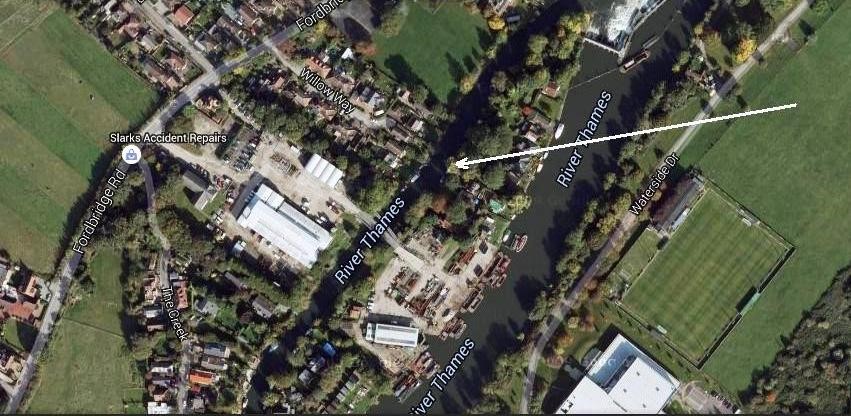By Andrew Lansdale
I have lived on the island known as Wheat-ley’s Ait for nearly seven years. Although it was July when I first saw the house, it was like a monsoon with rain bouncing knee-high from the paving stones. But despite that small inconvenience, I loved it. Some say that with some houses, one only has to stand outside and one feels that someone died there the day before. But not our house and my wife loved it as well.
But we had to undergo an interview by the sellers first. Apparently they felt that it was their duty to assure themselves that we were suitable types to move in. I presume we passed the test because we became islanders the following October.
The island has not always been permanently inhabited. In Victorian times, it was seasona-bly occupied by ‘Osiers’ who cut withies from the large numbers of the island’s willow trees. They lived in tents, loaded the withies into barges and sent them downstream for making heavy baskets, used by traders in city markets. The trade died about 1895.
Further upstream below Shepperton Lock, is D’Oyly Carte island, which was purchased by Richard D’Oyly Carte in 1890. One of the houses on our island is called La Bohème and was originally built as a D’Oyly Carte boat house. One of D’Oyly Carte’s bizarre ideas was to keep a crocodile on his island; fortu-nately only one.
Some older GPS systems position our post-code on the wrong side of the Thames. Thus when we moved in, the removal men tried to deliver our possessions to the pub across the river. Living 700 yards from the road posed problems in the first week or so. We had to check that we hadn’t forgotten anything – car keys for instance.
But island life is generally a healthy one. The walk to the road and back ensures that our daily ‘steps’ are kept high. There is no mains water but there is a spring that runs under the island and the residents pump its water to their taps. It is better than bottled spring water. After the 2014 floods and accompanying pollution, the environmental health people in fact pronounced it of a better quality than mains water.
Wildlife is abundant, mainly birds. We have woodpeckers, blackbirds, jays and numerous robins. Birdsong is nearly deafening some-times. Swans, geese, mallards and more exotic waterfowl are often in sight. Green parakeets fly around in squadrons with their shrieking calls.
In the 1950s film, The African Queen starring Humphrey Bogart and Katherine Hepburn, there is a scene in the film where Bogart is hauling their boat through a swamp. It was thought too dangerous to film this in Africa and rumour has it that it was shot in the Creek, whose waters flow past our house. Parakeets were used to add local colour. After filming, these were released into the wild; hence the proliferation of noisy green birds in the last 70 years. But no one will know the truth.
There is a general camaraderie here. We hold a ‘path party’ twice a year. This does not involve wild drinking or worse. We all turn up with brooms, wheelbarrows and clippers and clear the path of leaves in the autumn and brambles and creepers in the summer; this accompanied by tea, coffee and bacon rolls.
Of course island life would not suit everyone. But living here is certainly something we have grown to love and judging by the family members and friends who are keen to visit us, it affects others in the same way. And in lock-down, it became a perfect bubble for us all.

